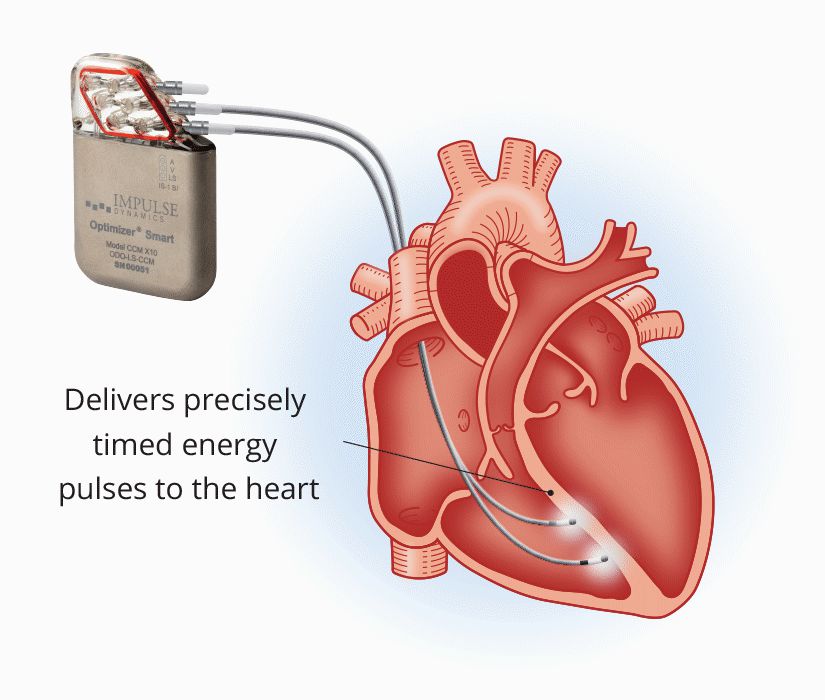We have discussed heart failure and its various treatments over the last few blogs. Last week I delved into a particular class of medications, the so-called SGLT2 inhibitors, which are the newest “kid on the block” in our pharmacologic armamentarium to help patients with CHF.
Even more recently, I became aware of a new technology called “cardiac contractility modulation” or CCM. The device, named “The Optimizer®” by the company that manufactures it, looks like a pacemaker with a battery (also called a “pulse generator”) that is placed under the skin on the chest wall and has two leads (“wires”) that are advanced through a vein and into the heart. These two leads are inserted against two different spots on the septum, which is the part of the heart muscle that is shared by the left and right ventricles.

Unlike a pacemaker, which stimulates the heart to contract when no electrical impulse is being generated spontaneously, CCM stimulates the heart immediately AFTER the heart has generated its own ventricular impulse. The effect of this added electrical stimulation is to improve how the heart cycles calcium, a vital component of creating the heart’s contraction, as well as relaxing appropriately after that contraction. This improvement in calcium handling allows the heart to use energy more efficiently.
In practice, studies have shown that, in people with heart failure from poor heart function (systolic heart failure), the heart function—as measured by ejection fraction—improves. Furthermore, symptoms of heart failure improve, hospitalizations for heart failure decline and there is even a suggestion that mortality is reduced.
The mechanism for these substantial benefits is still being studied, but includes improved energy utilization, as mentioned above, as well as a return to normal gene expression in the heart. There is also data showing what is called reverse remodeling, which means the enlarged heart begins to return to a normal size.
Whatever the mechanism is, the benefits can be striking, and it is exciting to have at our fingertips a new device with a whole new way of attacking heart failure. Recently approved for the treatment of systolic heart failure, the Optimizer device is now being studied in patients with diastolic heart failure, who have normal or close to normal heart function. At Pima Heart & Vascular, we are one of the centers participating in this research trial.
So, if you have heart failure that continues to be symptomatic, ask your cardiologist if you might be a candidate for this cutting-edge technology.
Greg Koshkarian, MD, FACC
